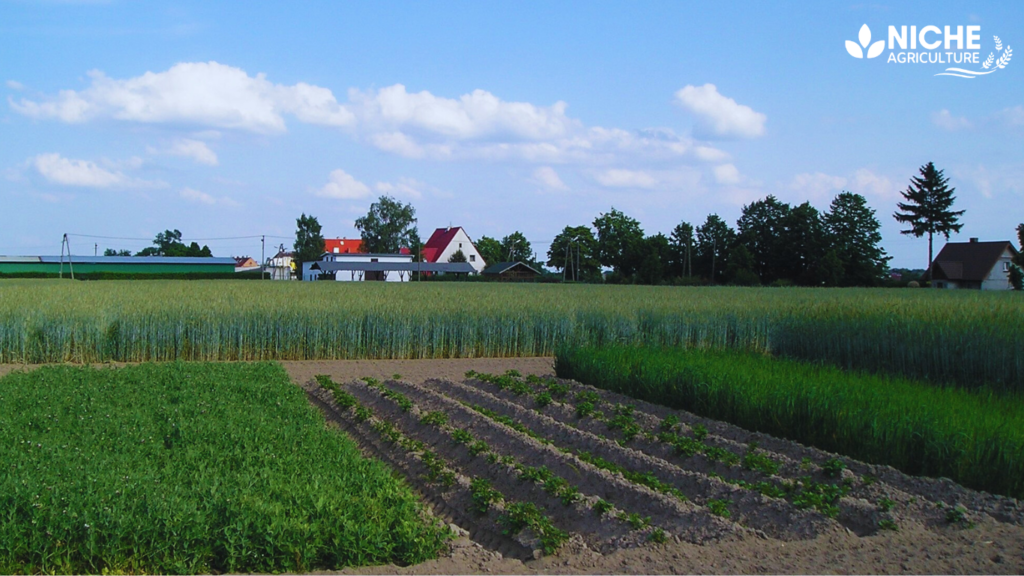Over millennia, agriculture has been the foundation of civilization that has seen a plethora of improvements and approaches. The three-field method system in agriculture is one of these that demonstrates the inventiveness of early farmers. This technique, which has its roots in medieval Europe, transformed farming methods, increasing output and reshaping socioeconomic environments. The three-field system’s guiding principles continue to influence sustainable agriculture practices across the globe, even in the face of contemporary innovations.
Understanding the Three-Field System:
Arable land is divided into three fields using the three-field system, a crop rotation technique: one field is used for winter crops, one for summer crops, and one is left fallow. Farmers can maintain soil fertility, control pests and diseases, and increase yields by using this rotation. Each field experiences periods of active cultivation and rest by rotating through different crops, which enhances soil health and long-term sustainability. This method lessens the need for chemical inputs, breaks up pest cycles, and minimizes nutrient depletion. The three-field strategy preserves environmental resources while optimizing agricultural yield through systematic rotation.
Benefits of Crop Rotation:
The three-field system’s foundation is crop rotation, which has several advantages for both soil health and agricultural productivity. Farmers keep key minerals like nitrogen, phosphate, and potassium from being depleted by rotating their crops. These elements are necessary for plant growth. Additionally, a variety of crops interfere with pests’ and diseases’ life cycles, lowering the need for chemical treatments. Legume crops, like peas and beans, also improve soil fertility by symbiotically interacting with nitrogen-fixing bacteria to enrich the soil with nitrogen.
Fallow Fields: Restoring Vitality:
One field in the three-field method is kept fallow every year so that it can repopulate and restore its nutrients. By interrupting the ongoing cropping cycle, fallowing reduces soil compaction and erosion while fostering microbial activity. Weeds are also managed throughout the fallow season, which lessens competition for resources in crops that follow. Fallow fields also allow livestock to graze there, incorporating animal husbandry into the agricultural cycle.
Social and Economic Implications:
In medieval Europe, the three-field system’s acceptance resulted in profound socioeconomic shifts. Surpluses from increased agricultural output fueled commerce and urbanization. Urban centers prospered as populations increased due to the abundance of food supply. Additionally, the system’s efficiency decreased the need for labor, which made specialization and the growth of non-agricultural businesses possible. As a result, the three-field system was essential to the shift from feudalism to a more sophisticated, market-based economy.
Legacy and Adaptation:
Even though the three-field system peaked in medieval Europe, its ideas are still relevant in contemporary farming methods. Crop rotation and adopting practices that reduce environmental degradation and increase climate change resilience are common sources of inspiration for sustainable farming efforts. Additionally, agroecological methods, which are consistent with the three-field system’s philosophy, highlight the significance of soil health and biodiversity.
Challenges and Solutions:
Despite its benefits, the three-field system’s widespread adoption was hindered by concerns with land tenure, technical advancements, and environmental regulations. Similar difficulties still face modern agriculture, made worse by expanding worldwide markets and escalating environmental constraints. However new developments in agroecology, agrotechnology, and precision agriculture provide creative ways to raise the productivity and sustainability of farming systems.
Conclusion:
The three-field method is proof of the insight and inventiveness of the first farmers, who were able to work in harmony with the natural world. Sustainable food production was made possible by this traditional agricultural method, which prioritized resilience, biodiversity, and healthy soil. The three-field system’s guiding principles continue to be applicable as we face the difficulties of the twenty-first century, helping us move towards a future in agriculture that is more just, resilient, and regenerative. Through the combination of innovation and tradition, we may create a future in which agriculture feeds the world and people for many centuries to come.

